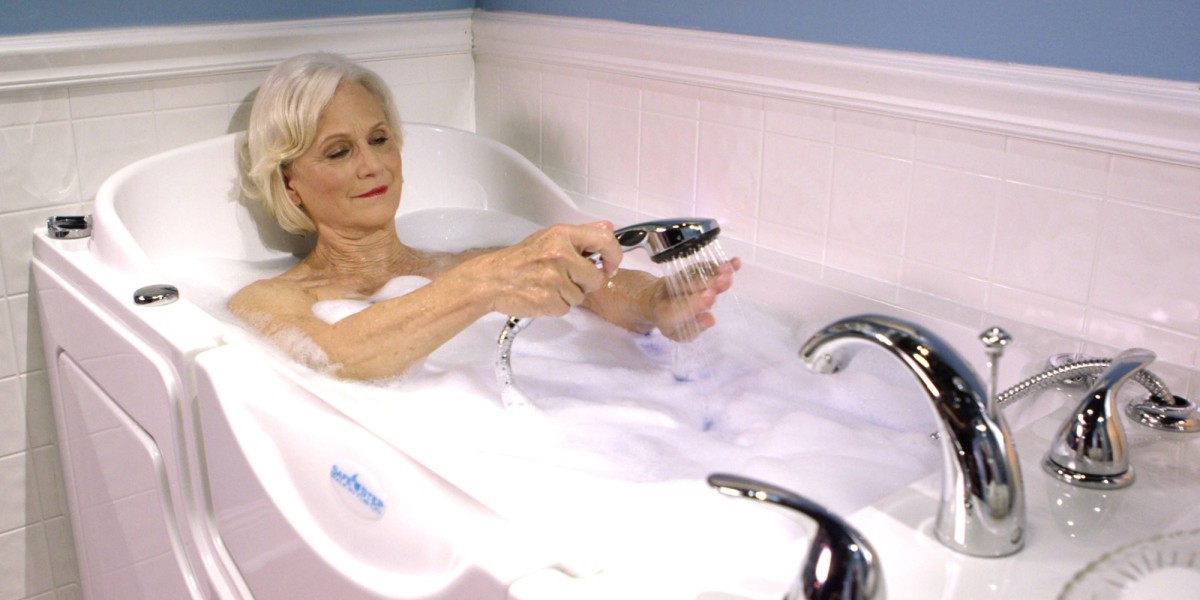Average Walk-In Bath Costs
The cost of a walk-in bath can vary significantly depending on the model, features, brand, and installation complexity. On average, you can expect to pay between $2,000 to $10,000 for a standard walk-in tub, though high-end models or customized versions can exceed $12,000. Here’s a more detailed breakdown of pricing:
Entry-Level Models: $2,000 – $4,000
These models typically offer basic features such as a low-entry door, non-slip floors, and safety grab bars. They may lack additional luxury features like hydrotherapy jets, heated seats, or advanced drainage systems.Mid-Range Models: $4,000 – $7,000
Mid-range walk-in tubs offer a broader range of features, including hydrotherapy jets, ergonomic seating, and perhaps a more aesthetic finish. These tubs generally provide a more comfortable and therapeutic bathing experience.Premium Models: $7,000 – $12,000+
High-end walk-in baths come with luxury features such as multiple hydrotherapy jets, air and water jets, heated backrests, built-in seating, LED lighting, and even chromotherapy options (color therapy). Custom-built models or designer options can push costs beyond $12,000.
It’s important to note that these prices typically include the cost of the tub itself but do not include installation fees, which can add to the total cost.
Additional Costs to Consider
1. Installation Costs
Installing a walk-in bath often requires professional help. While some homeowners may be able to install basic models themselves, more complex units that involve plumbing adjustments, electrical work for features like heated seats or jets, and specialized fittings generally require a certified installer.
Installation costs typically range from $1,000 to $3,000, depending on the complexity of the installation and your location. If your bathroom needs significant modifications (e.g., widening doorways, adjusting plumbing), these costs may increase.
2. Removal of Existing Bathtub
If you are replacing an old bathtub with a walk-in tub, you may need to factor in the cost of removing and disposing of the existing tub. This can add anywhere from $200 to $500 to the overall price, depending on the size of the bathtub and how difficult it is to remove.
3. Customization and Add-Ons
While basic walk-in tubs are relatively affordable, you can further increase the price with additional features, such as:
- Hydrotherapy Jets: $500 to $2,000, depending on the number and type of jets.
- Heated Backrest or Seat: $200 to $500.
- Chromotherapy or Aromatherapy: $300 to $1,000.
- Faucet and Showerhead Upgrades: $100 to $1,000+ for premium faucets or rain showerheads.
Customization options allow you to personalize your bath for added comfort or therapeutic benefits, but they do come with added costs.
4. Maintenance and Repairs
While walk-in tubs are generally low-maintenance, you may face occasional maintenance or repair costs. For example, cleaning the jets, replacing worn-out seals, or addressing minor plumbing issues could cost anywhere from $100 to $500 depending on the issue. Regular maintenance can help extend the life of your tub and keep it in working condition.
5. Warranty and Extended Coverage
Many manufacturers offer warranties that cover the workmanship and components of the walk-in bath, often for 1 to 5 years. However, if you want extended coverage or additional protection for things like the tub’s mechanical components or installation, you may need to purchase an extended warranty, which could add $200 to $500.
Factors Affecting Walk-In Bath Costs
Several factors influence the final cost of a walk-in bath. Understanding these variables can help you determine the right model for your budget and needs.
1. Size and Configuration
The size of the walk-in bath is one of the main factors affecting the cost. Larger tubs or models designed for two people can cost significantly more than standard single-user models. Additionally, customized configurations, such as special shapes or sizes to fit your bathroom, can drive up the price.
2. Materials and Finishes
The materials used in the tub can also influence the price. Premium materials such as acrylic or fiberglass are common, but higher-end models may feature stainless steel, cultured marble, or other luxurious finishes that raise the cost. Additionally, tubs with more decorative finishes or custom colors will usually come at a premium.
3. Features and Technology
Walk-in tubs can be equipped with various high-end features, such as:
- Hydrotherapy or Whirlpool Jets: These provide a spa-like experience, helping to relieve aches and pains.
- Air Jets: Similar to hydrotherapy jets but designed to create bubbles for a gentle massaging effect.
- Temperature Control: Advanced heating systems for controlling the water temperature quickly and precisely.
- Massage or Therapy Features: These may include specialized massage settings, foot massage jets, or chromotherapy lighting.
The more advanced the features, the higher the cost. Features like heated seats or aromatherapy systems may also significantly increase the overall price.
4. Brand and Manufacturer
Different brands offer varying price points, and well-established or highly-rated brands generally come with a higher price tag due to their reputation for quality, reliability, and customer service. It’s also important to consider the manufacturer’s warranty and after-sales support, which can provide additional value over the long term.
5. Location and Shipping Costs
Shipping and delivery fees can vary depending on your location, especially if the tub is custom-made or requires specialized delivery methods. If you live in a remote area, shipping costs could add up. Some companies may include shipping in the price, while others may charge separately, so be sure to inquire about these fees when getting quotes.
Financing Options for Walk-In Baths
Given the substantial cost of a walk-in bath, many manufacturers and suppliers offer financing options to make the purchase more affordable. These might include:
- Monthly payment plans through the manufacturer or third-party lenders.
- Interest-free financing for a set period.
- Home equity loans or lines of credit, particularly if you plan to renovate your bathroom in conjunction with installing the tub.
Check with the supplier to explore available financing options if you want to spread out the cost over time.
Conclusion
A walk in baths cost can range from $2,000 to $12,000, depending on the model, features, and customization options. While the upfront cost may seem high, the safety, comfort, and independence it provides—especially for those with mobility limitations—make it a valuable investment. Be sure to consider additional costs like installation, customization, and long-term maintenance when planning your budget.
By understanding the costs involved and considering the features that matter most to you, you can choose a walk-in bath that fits your needs and enhances your bathing experience. Whether you opt for a basic model or a high-end, feature-rich unit, a walk-in bath is a smart way to improve your bathroom’s safety and comfort.









